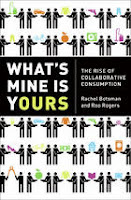Here's seven ways to change our minds to come up with breakout strategies:
- Thinking like a caregiver: When we're thinking like an inventor, we're too close to what we're inventing. There's nobody we're considering how they differ with our own outlook, assumptions and preferences. When we think like a caregiver, it's no longer about us or our invention. We become attentive to those we're caring for, caring about and caring enough to make a difference. The value of our efforts is in the eyes of the beholder, not how we see our conduct. We're attuned to those whom we want to value our efforts.
- Thinking about resolving issues: When we're thinking about making improvements, we stick with what's already working. We adapt, add on to or fix the thing that already exists. When we think about resolving issues, the existing thing may be part of the problem, making things worse or ignoring an issue. Resolving issues can have a bigger impact than incremental improvements. It can generate more buzz, buy-in and uses than added features or changes in specs.
- Thinking about functionality: When we're thinking about artifacts, we pay attention to superficial appearances. We improve the look, package and "design" that gets added on. When we're thinking about functionality, we can come up with "101 uses for a dead cat". We see how to "kill two birds with one stone" and to create tools which serve several purposes. We questioning what a design is good for, how it works and how it gets into trouble.
- Thinking through the processes: When we're thinking of things, we're dealing with what's static, stable or even stagnant. We assume it will be the same tomorrow and design accordingly. When we think through processes, we're in tune with what's changing, evolving and transitioning. We're aware of phases the processes go through and the ways they're affected by contexts. We align our design with those processes and break into bigger impacts.
- Thinking of cycles: When we adopt straightforward explanations, we believe we're making things happen by cause and effect. We misdiagnose any non-linear situation that may come back to haunt us, get fed by our attention or spawn chronic problems. When we're thinking of cycles, we watch for how to benefit from initiatives coming full circle. We notice all the vicious and virtuous cycles in play. We see how to get self-reinforcing dynamics working in our favor.
- Thinking about flowing: When we believe life is a struggle, we take pride in our striving. We're attracted to uphill battles and show off how difficult it was to achieve our results. When we think about flowing, we see how the results we want can fall into place. We set-up others' successes without knowing how we will benefit from them. We live in a state of wonder where right conduct, timing and proportion comes to mind as needed.
- Thinking with paradoxes: When we're thinking with categories, something is one thing or the other, but not both. We rule out the winning combination, pass up exploring the intersection and miss out on the best of both coming together. We we think with paradoxes, it's two sides of one coin, parts of the whole and essential to a total solution. We include what others exclude and break out of the paradigm of partial solutions.
One way to follow this advice and change our thinking is to make it easy on ourselves. First we write down, mind map or dictate what we're already thinking. Then we recognize which kinds of thinking we're doing. If any of the thinking plays into sustaining and incremental changes, think again. Write down another column on the same page, expand the mind map or record a second viewpoint. I find this is much easier that getting it right the first time. We allow for the process of changing our mind in stages.




